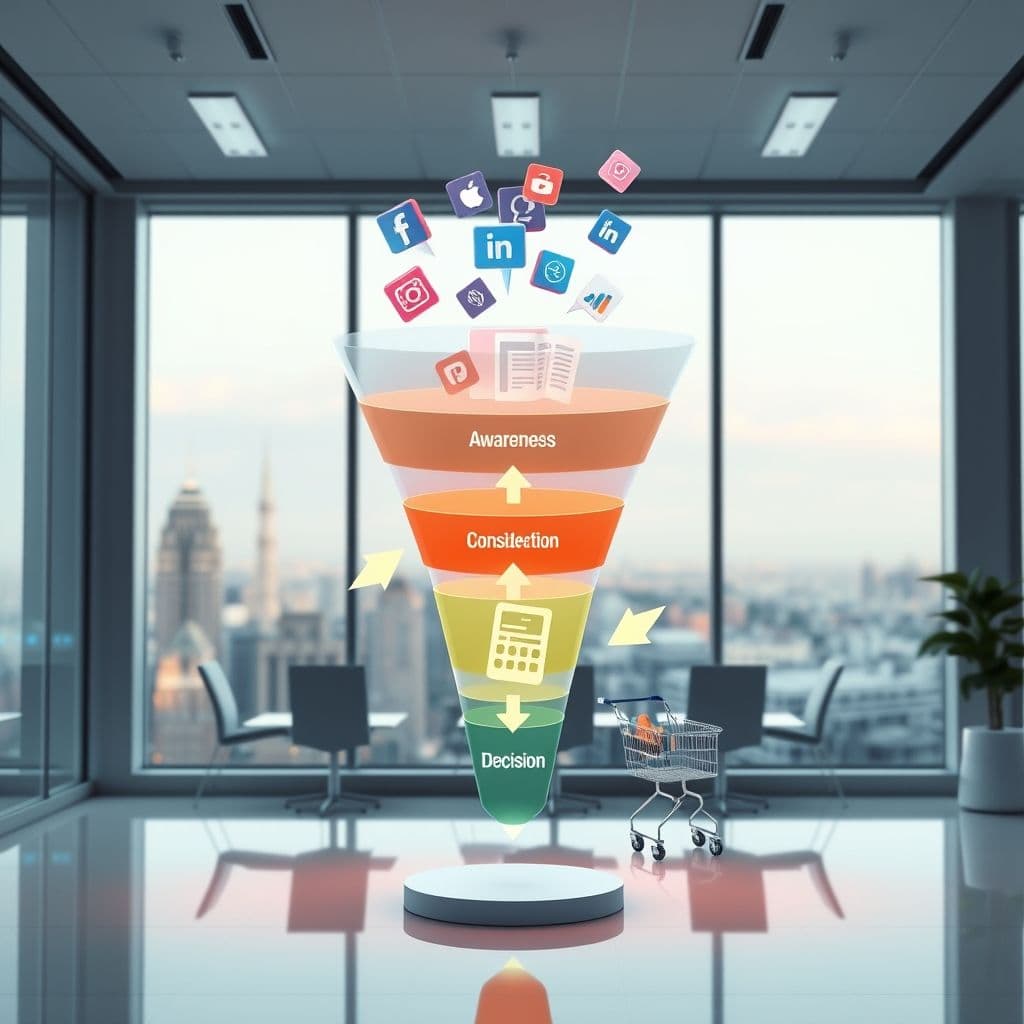Demand Generation Mastery: A Step-by-Step Guide to Fueling Business Growth

In today's competitive digital landscape, demand generation has become the cornerstone of successful marketing strategies. Unlike traditional lead generation, demand generation creates a sustainable pipeline of interested prospects by educating and nurturing them throughout their buyer's journey. This comprehensive guide will walk you through six essential steps to master demand generation, from understanding foundational concepts to implementing advanced tactics and measuring your success. View original learning path
Step 1: Understand the Basics of Demand Generation
Demand generation is the holistic approach to creating awareness and interest in your products or services. It's not just about capturing leads; it's about building relationships with potential customers throughout their entire buying journey. The importance of demand generation lies in its ability to create sustainable business growth by aligning marketing and sales efforts. Key components include content marketing, email nurturing, social media engagement, and account-based marketing strategies. For example, HubSpot's inbound methodology is a perfect illustration of effective demand generation in action.

Step 2: Identify Target Audience and Buyer Personas
Effective demand generation starts with crystal-clear understanding of who you're trying to reach. Begin by defining your target audience using demographic, firmographic, and behavioral data. Then create detailed buyer personas - semi-fictional representations of your ideal customers. For each persona, document their job title, challenges, goals, preferred content formats, and buying triggers. Understanding customer pain points is crucial; for instance, a SaaS company might discover that their ideal customer struggles with inefficient workflow management, which becomes a central theme in their demand generation content.
Step 3: Develop a Comprehensive Marketing Strategy
With your audience defined, build a strategy that aligns with their journey. Set SMART goals (Specific, Measurable, Achievable, Relevant, Time-bound) for your demand generation efforts. Choose marketing channels based on where your audience spends time - LinkedIn for B2B, Instagram for B2C, etc. Create content for each stage: educational blog posts for awareness, comparison guides for consideration, and case studies for decision-making. Implement lead nurturing through email sequences that deliver increasing value over time. For example, a cybersecurity company might offer a free threat assessment tool as a middle-of-funnel conversion point.

Step 4: Implement Effective Lead Generation Tactics
Transform your website into a lead generation machine by optimizing every page with clear CTAs. Create landing pages with single-focused offers that solve specific problems - for instance, 'Download our 2024 Marketing Budget Template.' Use forms that balance information collection with conversion rates (typically 3-5 fields). Implement SEO strategies targeting commercial intent keywords like 'best CRM for small businesses.' Complement this with SEM campaigns for high-intent searches. Leverage social media platforms with targeted content and lead gen forms - LinkedIn's lead gen forms can decrease friction by auto-populating user data.
Step 5: Measure and Analyze Demand Generation Performance
Establish KPIs that reflect your demand generation goals: website traffic, conversion rates, marketing qualified leads (MQLs), sales accepted leads (SALs), and ultimately, revenue influenced. Implement tracking through tools like Google Analytics, HubSpot, or Marketo. Analyze which channels and content types drive the most qualified leads. Conduct A/B tests on landing pages, email subject lines, and ad creatives. For example, you might discover that video content converts 30% better than text-based content for your audience, prompting a strategic shift in content production.
Step 6: Stay Updated with Industry Trends and Best Practices
The digital marketing landscape evolves rapidly. Subscribe to leading marketing publications like MarketingProfs, Content Marketing Institute, and HubSpot's blog. Attend virtual events like DemandGen Summit or INBOUND. Join professional communities on LinkedIn or Slack where marketers share real-world experiences. Implement a regular 'test and learn' approach - for instance, experimenting with interactive content like quizzes or calculators that have shown increased engagement in recent years.
Conclusion
Mastering demand generation requires a strategic, multi-channel approach that focuses on the entire buyer's journey rather than just lead capture. By understanding your audience deeply, creating valuable content, implementing robust lead generation tactics, and continuously measuring and optimizing your efforts, you'll build a sustainable pipeline of qualified leads. Remember that demand generation is an ongoing process - what works today may need adjustment tomorrow as market conditions and buyer behaviors evolve.
Frequently Asked Questions
- How long does it take to see results from demand generation efforts?
- While some tactics like PPC can show immediate results, most demand generation strategies take 3-6 months to demonstrate significant impact. Content marketing and SEO efforts typically require 6-12 months to reach full potential, but create sustainable long-term growth.
- What's the difference between demand generation and lead generation?
- Lead generation focuses on capturing contact information, while demand generation encompasses the entire process of creating awareness and interest in your offerings. Demand generation includes lead gen but also focuses on nurturing relationships and building brand authority.
- How much budget should we allocate to demand generation?
- A typical B2B company allocates 7-10% of revenue to marketing, with demand generation activities comprising 50-70% of that budget. The exact allocation depends on your growth stage, industry, and customer acquisition costs.
- What are the most effective content types for demand generation?
- Top-performing content includes educational blog posts, in-depth guides, case studies, webinars, and interactive tools. The best content types vary by industry and buyer persona, so testing is essential.





